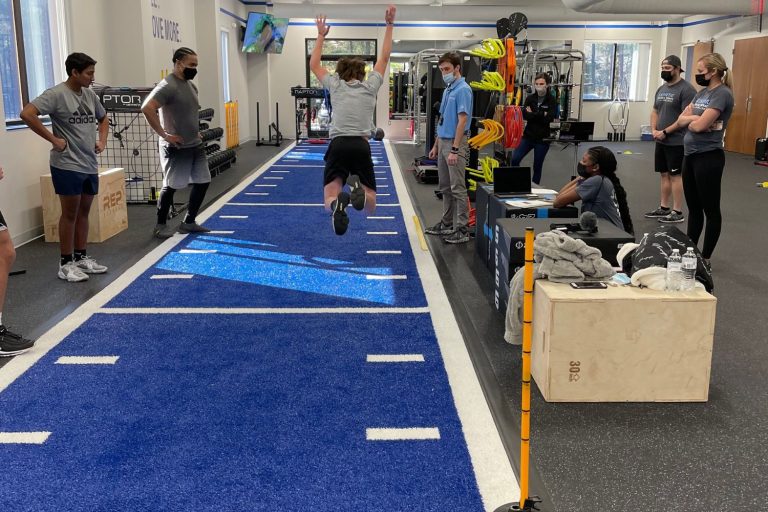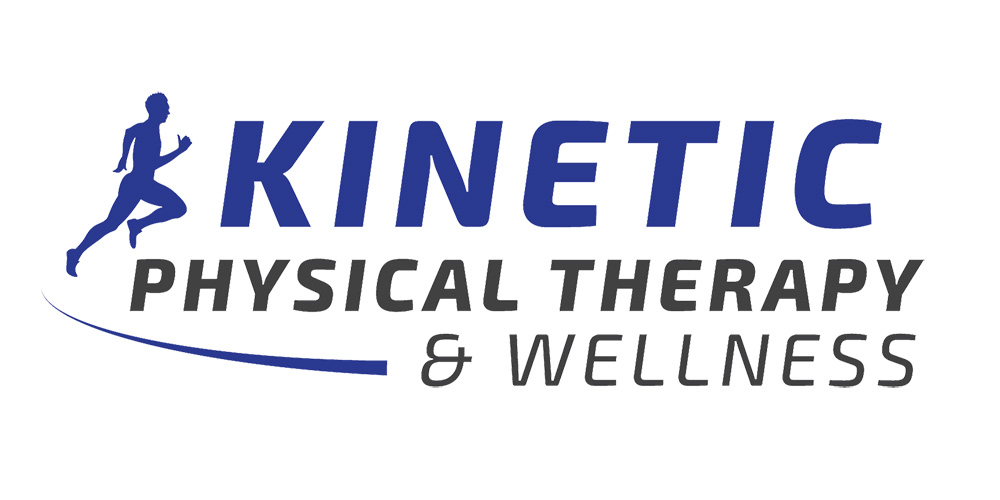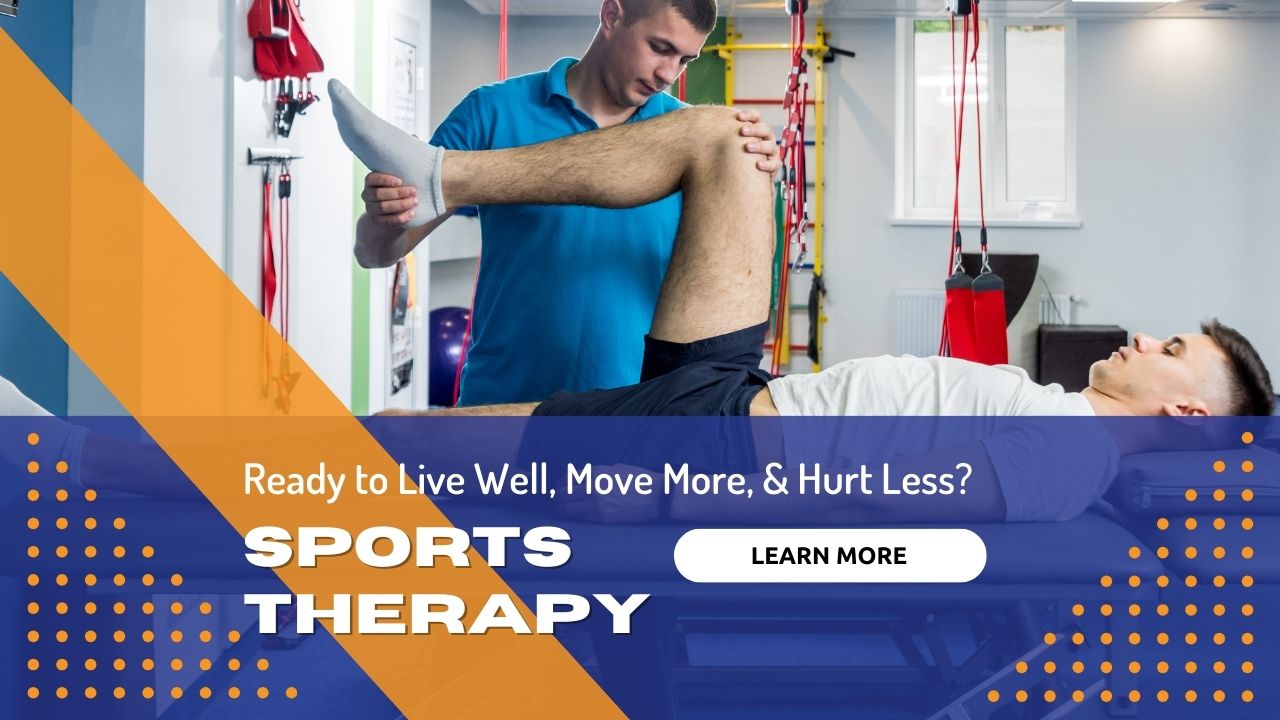

3 Simple Steps to Prevent Golf Injuries
It’s estimated that about 29 million Americans each year hit the links for at least one round of golf. That’s 1 in 10 people in the U.S., according to the National Golf Foundation. But while golf is often considered a safe, low-impact, leisurely activity for people of all ages and abilities, that impression vastly underestimates the impact golf has on the body.
From sudden, acute injuries due to poor form or the lack of flexibility, to the development of long-term, overuse injuries caused by excessive play or poor swing mechanics, a round of golf can turn from leisurely to debilitating without proper training and conditioning.
People love to play golf because it’s challenging and competitive while, for the most part, remaining nondiscriminatory based on age or fitness level, but there’s no denying that golf as a sport is associated with a significant number of injuries each year – conditions that can keep you off the links while affecting other aspects of your life.
According to the U.S. Consumer Product Safety Commission, more than 131,000 people were treated in hospital emergency rooms, doctors’ offices and other clinics for golf-related injuries in 2015 alone. The most common injuries affected golfers’ backs, shoulders and elbows.
The most common golf injuries tend to happen either when a golfer jumps into a season or round too quickly, before the body’s prepared for the rigors of 18 holes or they come from playing and practicing too much – without proper rest – which can lead to overuse injuries like back pain or golfer’s elbow.
Studies by the American Orthopaedic Society for Sports Medicine (AOSSM) have shown that both are real issues within the golf community. For instance, AOSSM says that more than 80 percent of golfers spend less than 10 minutes warming up before a round. At the same time, about 44 percent of all reported golf injuries in youths are from overuse.
These injuries are preventable, and the first step is realizing that golf is truly a sport, not just a leisure activity. With any sport, you can’t just pick up the driver and start swinging. You have to get your body in shape for golf – both before the season and before a particular round – and you have to know when to rest.”
Preventing golf injuries requires the following:
Proper Mechanics: Your swing isn’t just important for accuracy and length. Proper mechanics keep you from placing too much strain on your back, elbows, shoulders … really your entire kinetic chain, from your feet to your head.
A Warmup Routine: If you’re one of the 80 percent of golfers who spend less than 10 minutes warming up, you’re just asking for injury. Instead, develop a regular and reliable stretching and warmup routine for use prior to each round that promotes flexibility, increases your heart rate, and gradually works your body up to swinging the driver.
Professional Advice: A golf pro can help you with mechanics, but a physical therapist can ensure your body is up for the rigors of performing these mechanics through nine or 18 holes. A full assessment from a physical therapist can help a golfer identify imbalances in strength and flexibility, from which a PT can provide him or her with a path toward addressing these deficiencies with an eye toward injury prevention and improving the golf game.
Please Share
categories
Recent Posts
categories

3 Simple Steps to Prevent Golf Injuries
It’s estimated that about 29 million Americans each year hit the links for at least one round of golf. That’s 1 in 10 people in the U.S., according to the National Golf Foundation. But while golf is often considered a safe, low-impact, leisurely activity for people of all ages and abilities, that impression vastly underestimates the impact golf has on the body.
From sudden, acute injuries due to poor form or the lack of flexibility, to the development of long-term, overuse injuries caused by excessive play or poor swing mechanics, a round of golf can turn from leisurely to debilitating without proper training and conditioning.
People love to play golf because it’s challenging and competitive while, for the most part, remaining nondiscriminatory based on age or fitness level, but there’s no denying that golf as a sport is associated with a significant number of injuries each year – conditions that can keep you off the links while affecting other aspects of your life.
According to the U.S. Consumer Product Safety Commission, more than 131,000 people were treated in hospital emergency rooms, doctors’ offices and other clinics for golf-related injuries in 2015 alone. The most common injuries affected golfers’ backs, shoulders and elbows.
The most common golf injuries tend to happen either when a golfer jumps into a season or round too quickly, before the body’s prepared for the rigors of 18 holes or they come from playing and practicing too much – without proper rest – which can lead to overuse injuries like back pain or golfer’s elbow.
Studies by the American Orthopaedic Society for Sports Medicine (AOSSM) have shown that both are real issues within the golf community. For instance, AOSSM says that more than 80 percent of golfers spend less than 10 minutes warming up before a round. At the same time, about 44 percent of all reported golf injuries in youths are from overuse.
These injuries are preventable, and the first step is realizing that golf is truly a sport, not just a leisure activity. With any sport, you can’t just pick up the driver and start swinging. You have to get your body in shape for golf – both before the season and before a particular round – and you have to know when to rest.”
Preventing golf injuries requires the following:
Proper Mechanics: Your swing isn’t just important for accuracy and length. Proper mechanics keep you from placing too much strain on your back, elbows, shoulders … really your entire kinetic chain, from your feet to your head.
A Warmup Routine: If you’re one of the 80 percent of golfers who spend less than 10 minutes warming up, you’re just asking for injury. Instead, develop a regular and reliable stretching and warmup routine for use prior to each round that promotes flexibility, increases your heart rate, and gradually works your body up to swinging the driver.
Professional Advice: A golf pro can help you with mechanics, but a physical therapist can ensure your body is up for the rigors of performing these mechanics through nine or 18 holes. A full assessment from a physical therapist can help a golfer identify imbalances in strength and flexibility, from which a PT can provide him or her with a path toward addressing these deficiencies with an eye toward injury prevention and improving the golf game.
Please Share








